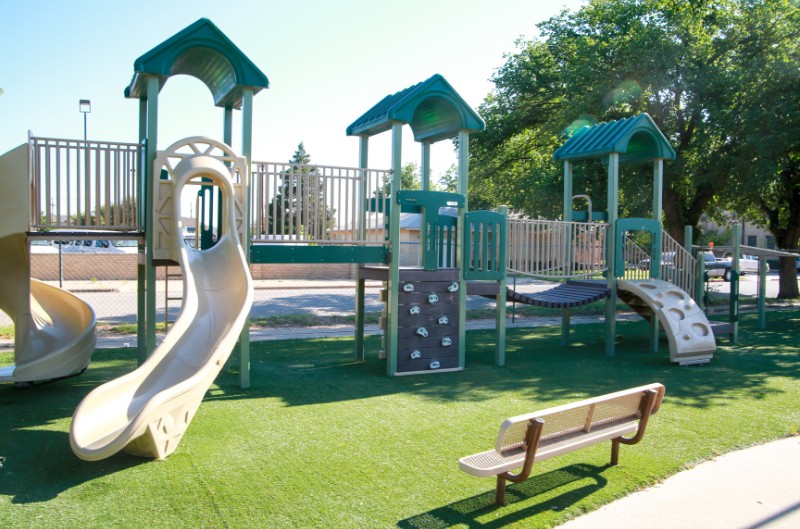
From Playgrounds to Eco-Havens: Parks Transforming Communities and the Planet
Author: Austin Stanfel
Parks and recreation areas are pivotal in creating a sustainable and livable environment. By integrating natural spaces into urban landscapes, fostering community engagement, and promoting biodiversity, parks and recreation initiatives improve human well-being and contribute to environmental preservation. This article delves into how parks and recreation efforts enhance the environment, offering insights into their design, ecological impact, and societal benefits.
The Role of Parks in Urban Environments
Urban areas are often characterized by concrete jungles and bustling activity, leaving little room for natural elements. Parks serve as vital green spaces that break this monotony, providing a sanctuary for residents and wildlife. They help mitigate urban heat islands, reduce air pollution, and offer a refuge for mental relaxation.
Strategically designed parks can:
Improve Air Quality: Trees and plants absorb pollutants such as carbon dioxide and release oxygen, creating cleaner air for communities.
Mitigate Urban Heat Islands: Large areas of vegetation cool down surrounding neighborhoods, reducing the reliance on air conditioning and lowering energy consumption.
Provide Stormwater Management: Parks often incorporate wetlands, porous surfaces, and rain gardens to help manage stormwater runoff and reduce the risk of flooding.
Cities like Singapore and Portland are exemplars of integrating parks into urban planning. They show that green spaces can coexist with development while enhancing the overall quality of life.
Promoting Biodiversity
Parks and recreation areas can serve as hubs for biodiversity by offering habitats for various plant and animal species. Urban parks, when planned with native flora and fauna in mind, can become ecological sanctuaries that:
Support Pollinators: Bees, butterflies, and birds thrive in spaces with diverse plant species, contributing to pollination and agricultural productivity.
Protect Endangered Species: Many parks host conservation projects to protect rare species from urban encroachment.
Enhance Ecosystem Services: Healthy ecosystems within parks contribute to clean water, fertile soil, and climate regulation.
For instance, the High Line in New York City has transformed a former railway line into a linear park, creating a habitat for various species and enhancing ecological diversity in the city’s heart.
Social and Health Benefits
The environmental benefits of parks extend into societal realms by fostering a deeper connection between people and nature. Parks offer spaces for physical activities, social gatherings, and mental rejuvenation, indirectly promoting environmental stewardship.
Physical Activity: Trails, playgrounds, and sports facilities encourage people to engage in outdoor activities, fostering a culture of health and fitness.
Mental Health: Nature therapy has been linked to reduced stress, anxiety, and depression, making parks essential for mental well-being.
Community Building: Parks serve as communal spaces where diverse groups unite, cultivating a sense of shared responsibility for their maintenance.
Engaging communities through environmental education programs in parks also cultivate awareness about ecological preservation.
Enhancing Sustainability Through Recreation
Recreation programs within parks often align with sustainability goals, educating participants about environmental conservation while promoting eco-friendly practices. Activities like nature walks, wildlife photography, and kayaking often double as opportunities to learn about sustainability.
Eco-Tourism: Parks emphasizing low-impact tourism attract visitors and instil respect for natural ecosystems.
Waste Management: By implementing recycling programs and encouraging zero-waste picnics, parks set a precedent for sustainable behaviour.
Energy Efficiency: Parks incorporating renewable energy sources, such as solar-powered lighting, set examples for eco-conscious infrastructure.
Recreational spaces like the Eden Project in the UK combine sustainability education with leisure, proving that recreation can be both enjoyable and impactful.
The Economic Impact of Parks
Investing in parks and recreation can also have substantial economic benefits, proving that environmental enhancement and economic growth can go hand in hand.
Property Value Increase: Proximity to parks often raises property values, benefiting homeowners and increasing municipal revenue through property taxes.
Tourism Revenue: Parks with unique features or activities attract tourists, boosting local economies.
Job Creation: Maintaining parks and running recreational programs create employment opportunities, contributing to economic stability.
The economic ripple effect of parks underscores their importance in urban planning and development.
Read More: Parks 2.0 The Impact of AI on Public Spaces and Community Engagement
Innovative Designs for Environmental Enhancement
Modern parks are no longer limited to open fields and playgrounds; they incorporate innovative designs that prioritize environmental enhancement. Examples include:
Green Roofs and Walls: Vertical parks and rooftop gardens maximize green space in areas with limited land availability.
Innovative Parks: Technology integration for water management, lighting, and visitor engagement ensures minimal environmental impact.
Themed Ecosystems: Parks like Singapore’s Gardens by the Bay showcase themed ecosystems that educate visitors about diverse biomes.
Such designs reflect a commitment to sustainability and environmental education, inspiring communities worldwide.
Challenges and Solutions
While parks and recreation areas offer myriad benefits, their development and maintenance are challenging. Funding, land availability, and balancing human activity with ecological preservation require innovative solutions.
Public-Private Partnerships: Collaborating with businesses can provide the necessary funds for park projects without burdening public resources.
Community Involvement: Engaging local communities in planning and maintaining parks ensures their relevance and sustainability.
Adaptive Management: Monitoring and adjusting park operations based on ecological and community feedback ensures long-term success.
These challenges require collaborative efforts between governments, communities, and environmental organizations.
Case Studies
1. Central Park, New York City
Central Park is a shining example of how urban parks can serve as environmental lungs for a bustling metropolis. Its design combines aesthetics with functionality, offering spaces for leisure while supporting diverse ecosystems.
2. Curitiba, Brazil
This Brazilian city is renowned for its innovative approach to urban sustainability. Its network of parks doubles as flood control systems, demonstrating how recreational spaces can solve environmental challenges.
3. Banff National Park, Canada
Banff balances tourism with conservation, showcasing how natural landscapes can be preserved while supporting recreational activities and local economies.
The Future of Parks and Recreation
As urbanization accelerates, the role of parks in enhancing the environment will only grow more critical. Future trends may include:
Climate-Resilient Parks: Designs that withstand extreme weather conditions and contribute to climate adaptation.
Inclusive Spaces: Parks that cater to people of all ages, abilities, and cultural backgrounds.
Digital Integration: Using apps and sensors to monitor environmental health and enhance visitor experiences.
These advancements highlight the evolving nature of parks as dynamic spaces that respond to human and environmental needs.
Conclusion
Parks and recreation are more than leisure spaces—they are vital components of a sustainable and harmonious environment. By fostering biodiversity, promoting health and wellness, and driving economic growth, parks create a positive feedback loop that benefits individuals and the planet. As we face pressing environmental challenges, investing in parks and recreation remains a powerful strategy for enhancing the environment and improving lives.
With thoughtful design and active community participation, parks will continue to be sanctuaries of hope, resilience, and sustainability for future generations.

